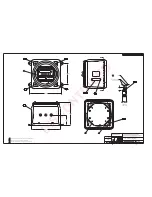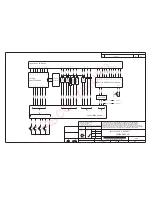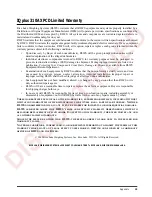
6
IQ 310A XCPD Technical/Service Manual
2.0
Installation and Wiring
This section is provided to help the installer and describes the procedures for installing the IQ plus 310A XPCD
indicator and enclosure, AC wiring, load cell wiring, conduit runs and internal modifications for the IQ plus
310A XPCD.
2.1
IQ plus 310A XPCD Enclosure
The following sections describe mounting locations and how to mount the enclosure and seal off the fittings.
2.1.1
Mounting and Mounting Locations
The mounting and installation of an explosion proof enclosure is more involved than a general purpose unit and it
is recommended that all outdoor installations have a shelter, roof, enclosure, or covering. The IQ plus 310A
XPCD enclosure is cast aluminum and direct sunlight can cause it to heat to a very high temperature which can
damage the electronics inside. (Such damage is not covered by the warranty). Sheltering the unit from sunlight
will help control the internal temperature.
Sunlight and variable temperatures can also cause moisture to condensate inside the enclosure. It is
recommended to shelter the outdoor installation by a shelter, roof, enclosure, or covering. Moist environments
can also be controlled by the use of desiccants. Contact your local dealer for information on desiccants.
Do not place desiccants on top of circuit boards. Place them in the bottom of the
enclosure away from electronics and wires.
The explosion proof enclosure is substantially heavier than a standard enclosure and thus the mounting surface
must be capable of reliably supporting the added weight.
The mounting and installation of the IQ plus 310A XPCD must be into Division II or safe electrical area per
NEC, Section 500. The inside of an explosion proof enclosure is classified as a Division II environment.
Switches and Glass
The glass and switches on the IQ plus 310A XPCD may look indestructible but they are not. If damaged in any
way, the entire unit must be completely turned off at the source until it is replaced. The enclosure must be
protected from blows and scrapes from passing equipment, falling objects, thick glues or resins, certain acids
which eat aluminum, and other hazards which can break or damage the enclosure.
The glass window in the enclosure must be not become scratched, pitted, or damaged in any way. Do not wipe
the glass with dirty gloves or rags as this can cause the glass to become scratched.
!
Caution
DISCONTINUED








































